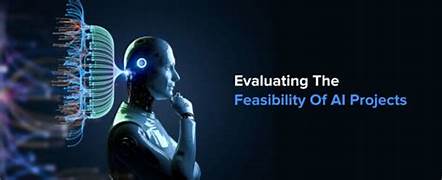Artificial General Intelligence: Feasibility and Challenges
Artificial General Intelligence (AGI) represents a vision where machines can perform any intellectual task a human is capable of. Unlike narrow AI systems designed for specific tasks, AGI aspires to possess a general understanding, reasoning capabilities, and adaptability akin to human cognition. While this ambitious goal has captivated researchers and technologists, achieving AGI is fraught with challenges, from technical barriers to ethical considerations. This article explores the feasibility of AGI, the hurdles to its realization, and its potential implications for society.
What is Artificial General Intelligence?
AGI, often referred to as “strong AI,” is characterized by the ability to:
- Learn and adapt across a wide array of tasks.
- Reason and solve problems in novel situations.
- Understand and interact with humans in a meaningful way.
- Possess self-awareness and general knowledge comparable to a human.
In contrast, narrow AI excels in specific domains, such as playing chess or diagnosing diseases, but lacks the flexibility to apply its expertise outside predefined boundaries. AGI, on the other hand, aims to mirror the versatility and breadth of human intelligence.
Feasibility of AGI: Theoretical Foundations
1. Advances in Machine Learning and Neural Networks
The rapid evolution of machine learning (ML) and neural networks provides a foundation for AGI development. Current AI systems, like GPT-4 and AlphaZero, showcase remarkable capabilities in language understanding and strategic problem-solving. However, these systems remain task-specific.
- Transfer Learning: Techniques that allow models to apply knowledge from one domain to another are critical stepping stones.
- Multimodal Models: Systems integrating multiple forms of input (text, vision, sound) hint at a more generalized approach to AI.
2. Cognitive Architectures
Efforts to replicate human cognitive processes, such as memory, reasoning, and decision-making, are central to AGI research. Cognitive architectures like Soar and ACT-R provide frameworks to model general intelligence but require significant refinement to achieve true AGI.
3. Simulating Human-Like Learning
Human intelligence thrives on experience, curiosity, and social learning. Mimicking these processes involves:
- Self-Supervised Learning: Training AI systems to infer patterns without labeled data.
- Meta-Learning: Enabling AI to learn how to learn, adapting to new tasks with minimal data.
- Embodied AI: Integrating AI into physical systems like robots to experience and learn from the environment.
Challenges in Achieving AGI
1. Computational Complexity
AGI requires immense computational power and data processing capabilities. Simulating the complexity of the human brain, with its billions of interconnected neurons, remains an enormous challenge despite advancements in hardware and algorithms.
2. Lack of Common Sense Reasoning
One major limitation of current AI systems is their inability to understand and reason about the world as humans do. Building systems that possess common sense remains a key hurdle.
3. Ethical and Safety Concerns
The development of AGI raises critical ethical questions:
- Control and Alignment: Ensuring AGI aligns with human values and intentions.
- Existential Risks: Preventing scenarios where AGI could act against human interests.
- Accountability: Determining responsibility for AGI-driven decisions and actions.
4. Interdisciplinary Challenges
AGI research spans multiple disciplines, including neuroscience, computer science, and psychology. Bridging gaps between these fields requires collaboration and a unified vision.
5. Economic and Social Impacts
The potential displacement of jobs, inequality in access to AGI, and its implications for global power dynamics must be carefully managed.
Potential Applications and Implications of AGI
1. Healthcare
AGI could revolutionize healthcare by:
- Diagnosing complex diseases with unprecedented accuracy.
- Personalizing treatment plans based on individual genetic profiles.
- Advancing drug discovery through accelerated research.
2. Education
In education, AGI could:
- Serve as a personalized tutor, adapting to each student’s learning style.
- Provide universal access to high-quality education.
- Develop novel teaching methods by analyzing learning patterns.
3. Scientific Research
AGI has the potential to:
- Automate hypothesis generation and testing.
- Accelerate discoveries in physics, biology, and other fields.
- Tackle complex problems like climate change and renewable energy.
4. Global Economy
AGI could transform industries by:
- Optimizing supply chains and logistics.
- Driving innovation in product development.
- Creating new economic opportunities in AI-driven sectors.
Balancing Optimism with Realism
While AGI promises transformative benefits, it is essential to temper expectations with a realistic assessment of current capabilities. Key considerations include:
- Timelines: Estimates for achieving AGI range from decades to centuries, depending on technological progress and unforeseen breakthroughs.
- Scalability: Current AI systems face challenges in scaling up to human-level intelligence.
- Ethical Preparedness: Developing robust frameworks to address ethical dilemmas is crucial.
Future Directions
1. Collaborative Research Initiatives
Global collaboration among researchers, governments, and industries is essential to accelerate AGI development and address shared challenges.
2. Focus on Interpretability
Building transparent AI systems that explain their decision-making processes will enhance trust and safety.
3. Policy and Regulation
Establishing guidelines to govern AGI research, deployment, and use will mitigate risks and ensure equitable benefits.
4. Interdisciplinary Approaches
Combining insights from neuroscience, philosophy, and sociology with AI research will provide a holistic approach to AGI development.
Conclusion
Artificial General Intelligence represents both an extraordinary opportunity and a profound challenge. While its feasibility remains uncertain, the pursuit of AGI has already spurred innovations that are transforming society. By addressing the technical, ethical, and social dimensions of AGI development, humanity can unlock its potential while safeguarding against its risks. As we move closer to this ambitious goal, the dialogue around AGI must remain inclusive, thoughtful, and forward-looking, ensuring that its benefits are shared equitably across the globe.


